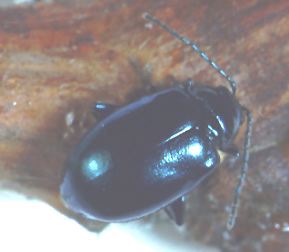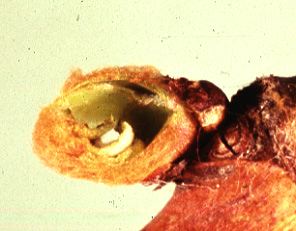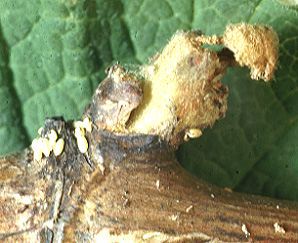


When larvae are mature they drop to the ground and pupate in an earthen chamber. Adults emerge 1-2 weeks later, in July and August. These adults feed for the rest of the summer but cause little damage. The injury consists of small patches eaten out of leaves. In the fall they seek protected places in which to overwinter. In addition to wild and cultivated grape varieties, grape flea beetles feed on Virginia creeper.
The grape flea beetle is more common in
neglected
vineyards, but some Virginia commercial growers consider this
species
their
main insect pest. Sprays and fall vineyard cleanup for
grape
berry
moth aid in controlling flea beetles, but sprays may need to be
directed
against this pest early in the season. This pest may escape
proper
identification
because of its injury being mistaken for that caused by climbing
cutworms.
Injury be the latter is more likely to be ragged in appearance,
though
there is overlap in appearance. Proper identification is
increasingly
important
as we depart from the use of broad spectrum organophosphates;
control
provided
by many new tools may not be as effective for Coleoptera as for
Lepidoptera.